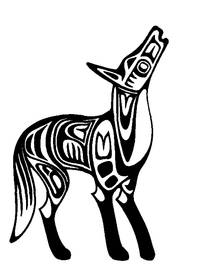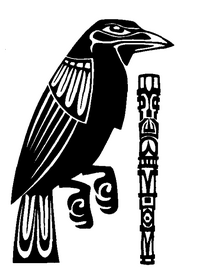Spirit was a term used for a variety of distinct but related concepts, creatures and types of being.
Spirits of the Living and the Dead[]
In everyday language, "having spirit" meant possessing a lively temperament.[2][3][4]
On a deeper level, the spirit was the animating lifeforce of a being, often equated with the soul.[5][6][7][note 1]
If the body of an inhabitant of the Realms died, their spirit usually moved on to become a petitioner of their respective deity,[6] or, in the case of unbelievers, one of the False or the Faithless.[5] Sometimes a curse, the tragic importance of some unfinished business, a will of extreme evil or good, or necromantic magic interfered with this course of events, causing the spirit to remain on Toril and become an undead creature.[8][9][10][11]
In Mulhorand, the Church of Osiris believed that people had two spirits within their bodies, known as ba and ka. The former was said to remain in a mortal's body when it died, while the latter moved on to be judged by Osiris.[12]
Nature Spirits[]

A depiction of the Coyote spirit

A depiction of the Raven spirit
The environment was populated with a near-infinite variety of creatures and forces with a close connection to nature, also often collectively called spirits.[13][14][15] Among these were counted the races of the dryads and nymphs.[13][14] Nature spirits, also called primal spirits, were considered to be the most powerful and reclusive of spirits that shamans, druids, and barbarians could contact.[15][16]
The Nine Trickster Gods of Omu were also considered primal spirits in the jungles of Chult.[17]
The land of Rashemen was also host to a great deal of nature spirits,[18] such as the telthor,[19] thomil, uthraki, and strongest of all the wood man.[20]
Next to the spirit of each physical part of nature, green elves revered a number of god-like wilderness spirits, most important among them Bear, Coyote, Eagle, Raven, Snake, and Wolf.[13][21][22]
Spirits of Kara-Tur[]
On the continent of Kara-Tur spirits called kami, or sometimes nature gods, represented all aspects of nature and the elements as well as personifying places.[23][24] They (together with other beings like oriental dragons) were organized in a great hierarchy called the Celestial Bureaucracy. Consequently, the plane paralleling the lands of Kara-Tur they resided in was named the Spirit World,[25] and the language of the Celestial Court was also called the Spirit Tongue.[26][27]
Related were several races that sprang from the union of spirits and humans, like hengeyokai and spirit folk.[23]
The eastern continent also had its share of undead spirits: They were condemned to their status by the Lords of Karma. They were shut up in the Underworld during the day, and terrorized the lands of the living by night. Among them were counted the bajang, bisan, gaki,[23] chu-u, con-tinh, and kuei.[25]
Despite the name, spirit creatures were not necessarily incorporeal; many had flesh and blood.[28]
Appendix[]
Notes[]
- ↑ In 1st-edition D&D, according to Deities & Demigods, there was a distinction between the terms "spirit" and "soul". Simply put, souls could be resurrected and spirits could not. Spirits, rather, were reincarnated. Interestingly, humans, dwarves, gnomes, halflings, and half-elves had souls, while elves, orcs, and half-orcs had spirits. This distinction seems to have not been followed in later editions.
See Also[]
References[]
- ↑ Larian Studios (October 2020). Designed by Swen Vincke, et al. Baldur's Gate III. Larian Studios.
- ↑ slade, et al. (April 1996). “Daggerford”. In James Butler ed. The North: Guide to the Savage Frontier (TSR, Inc.), p. 25. ISBN 0-7869-0391-0.
- ↑ Steve Kurtz (1994). Al-Qadim: Cities of Bone: Adventure Book. (TSR, Inc), p. 20. ISBN 1-56076-847.
- ↑ John Terra (November 1997). Four from Cormyr. Edited by Kim Mohan. (TSR, Inc.), p. 64. ISBN 0-7869-0646-4.
- ↑ 5.0 5.1 Ed Greenwood, Sean K. Reynolds, Skip Williams, Rob Heinsoo (June 2001). Forgotten Realms Campaign Setting 3rd edition. (Wizards of the Coast), pp. 258–259. ISBN 0-7869-1836-5.
- ↑ 6.0 6.1 David "Zeb" Cook (1994). Planescape Campaign Setting, A Player's Guide to the Planes. Edited by David Wise. (TSR, Inc), p. 9. ISBN 978-1560768340.
- ↑ Gary Gygax, David Cook, and François Marcela-Froideval (1985). Oriental Adventures. (TSR, Inc), p. 89. ISBN 0-8803-8099-3.
- ↑ Gary Gygax (December 1977). Monster Manual, 1st edition. (TSR, Inc), p. 43. ISBN 0-935696-00-8.
- ↑ Ed Greenwood et al. (December 1988). Lords of Darkness. Edited by Scott Martin Bowles. (TSR, Inc.), pp. 57–58, 96. ISBN 0-88038-622-3.
- ↑ Steven E. Schend and Kevin Melka (1998). Cormanthyr: Empire of the Elves. (TSR, Inc), p. 17. ISBN 0-7069-0761-4.
- ↑ Anne Gray McCready et al. (March 1994). Elves of Evermeet. (TSR, Inc), p. 125. ISBN 1-5607-6829-0.
- ↑ Eric L. Boyd (September 1997). Powers & Pantheons. Edited by Julia Martin. (TSR, Inc.), p. 120. ISBN 978-0786906574.
- ↑ 13.0 13.1 13.2 Anne Gray McCready et al. (March 1994). Elves of Evermeet. (TSR, Inc), p. 25. ISBN 1-5607-6829-0.
- ↑ 14.0 14.1 Anne Gray McCready et al. (March 1994). Elves of Evermeet. (TSR, Inc), pp. 30–31. ISBN 1-5607-6829-0.
- ↑ 15.0 15.1 Julia Martin, Eric L. Boyd (March 1996). Faiths & Avatars. (TSR, Inc.), pp. 188–189. ISBN 978-0786903849.
- ↑ Brian R. James (June 2009). “Realmslore: Sarifal”. In Chris Youngs ed. Dragon #376 (Wizards of the Coast), p. 61.
- ↑ Christopher Perkins, Will Doyle, Steve Winter (September 19, 2017). Tomb of Annihilation. Edited by Michele Carter, Scott Fitzgerald Gray. (Wizards of the Coast), p. 129. ISBN 978-0-7869-6610-3.
- ↑ Bruce R. Cordell, Ed Greenwood, Chris Sims (August 2008). Forgotten Realms Campaign Guide. Edited by Jennifer Clarke Wilkes, et al. (Wizards of the Coast), p. 168. ISBN 978-0-7869-4924-3.
- ↑ Anthony Pryor (June 1995). “Campaign Guide”. In Michele Carter, Doug Stewart eds. Spellbound (TSR, Inc.), p. 78. ISBN 978-0786901395.
- ↑ Anthony Pryor (June 1995). “Monstrous Compendium”. In Michele Carter, Doug Stewart eds. Spellbound (TSR, Inc.). ISBN 978-0786901395.
- ↑ Anne Gray McCready et al. (March 1994). Elves of Evermeet. (TSR, Inc), pp. 78, 80. ISBN 1-5607-6829-0.
- ↑ James M. Ward and Troy Denning (August 1990). Legends & Lore (2nd edition). (TSR, Inc), pp. 15, 23–26. ISBN 978-0880388443.
- ↑ 23.0 23.1 23.2 Mike Pondsmith, Jay Batista, Rick Swan, John Nephew, Deborah Christian (1988). Kara-Tur: The Eastern Realms (Volume I). (TSR, Inc), p. 26. ISBN 0-88038-608-8.
- ↑ Gary Gygax, David Cook, and François Marcela-Froideval (1985). Oriental Adventures. (TSR, Inc), p. 60. ISBN 0-8803-8099-3.
- ↑ 25.0 25.1 Rick Swan (July 1990). Monstrous Compendium Kara-Tur Appendix. (TSR, Inc.). ISBN 0-88038-851-X.
- ↑ James Wyatt (October 2001). Oriental Adventures (3rd edition). (Wizards of the Coast), p. 153. ISBN 0-7869-2015-7.
- ↑ David Cook, Steve Winter, and Jon Pickens (1989). Monstrous Compendium Volume Three Forgotten Realms Appendix (MC3). (TSR, Inc). ISBN 0-88038-769-6.
- ↑ James Wyatt (October 2001). Oriental Adventures (3rd edition). (Wizards of the Coast), p. 144. ISBN 0-7869-2015-7.
Connections[]
The Nine Immortals
Ai Ch'ing • Chan Cheng • Ch'en Hsiang • Chih Shih • Fa Kuan • Hsing Yong • Kwan Ying • Nung Chiang • Shu Chia
The Lesser Immortals
Jade Ladies • Ladies of Compassion • Lords of Karma • Monkey • Moon Women • Rice Spirits • Spirit Warriors
The Sages • Ancestors • Spirits
